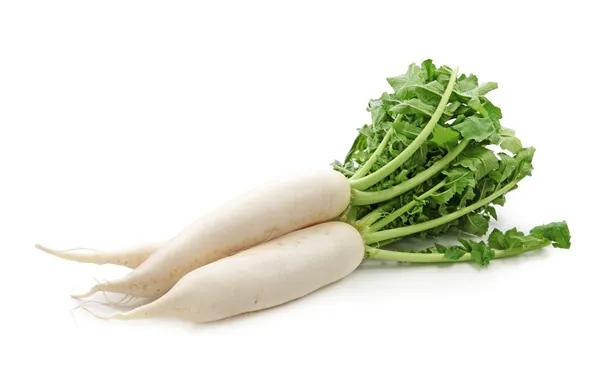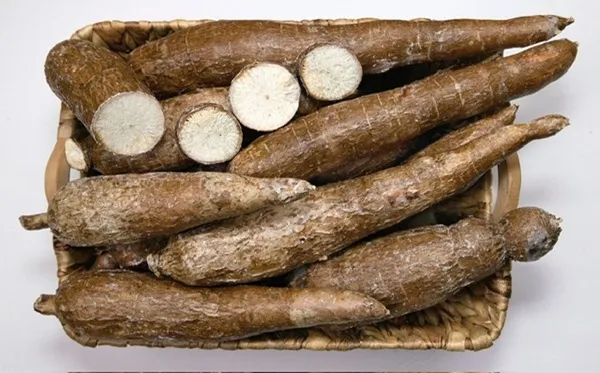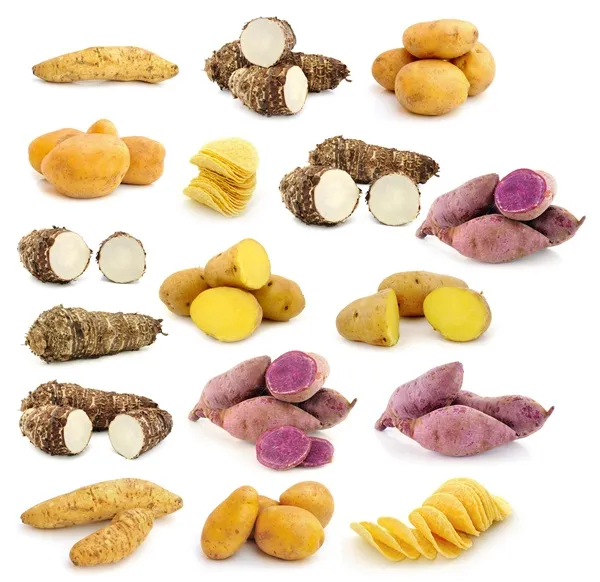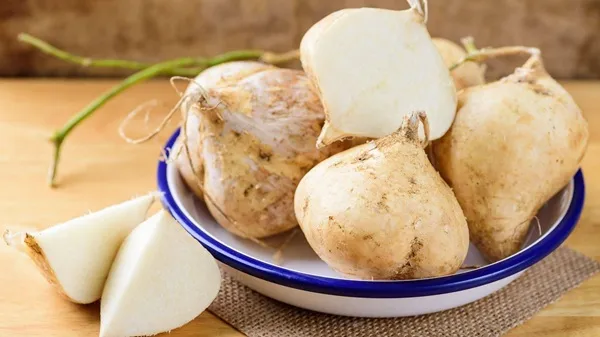Table of Contents
Daikon: A Comprehensive Guide to Varieties, Cultivation, Nutrition, and Culinary Uses
Introduction
Daikon (Raphanus sativus var. longipinnatus), a mild-flavored giant radish, is a cornerstone of Asian cuisine. Known as "white radish" or "winter radish," it thrives in cool climates and is prized for its crisp texture, versatility, and nutritional benefits. This article explores its global varieties, cultivation practices, health benefits, and culinary applications.
Global Varieties & Colors
Daikon cultivars vary in shape, size, and color:
- White Daikon: Classic cylindrical root with bright white skin and flesh; mild and slightly peppery.
- Watermelon Radish: Green-skinned with vibrant pink flesh; sweet and peppery.
- Sakurajima: Massive Japanese variety (up to 50 lbs); sweet and tender.
- Korean Mu: Short, stout root; ideal for kimchi.
- Black Spanish Radish: Dark-skinned with white flesh; pungent and spicy.
Sensory Profile
- Smell: Mildly earthy and peppery when raw; mellows to sweet when cooked.
- Flavor: Crisp and refreshing with a subtle bite (less spicy than small radishes).
- Texture: Juicy and crunchy raw; softens to a tender, potato-like consistency when cooked.
Nutrition & Health Benefits
- Calories: 18 kcal per 100g.
- Rich in: Vitamin C (34% DV), folate (6% DV), potassium (5% DV), and fiber (1.6g).
- Glycemic Index (GI): ~15 (very low), suitable for diabetics.
Health Benefits:
- Digestive Aid: Enzymes like amylase and esterase aid carbohydrate and fat digestion.
- Detoxification: Supports liver function by flushing toxins.
- Immune Boost: Vitamin C fights infections and boosts collagen.
- Anti-Inflammatory: Contains antioxidants like anthocyanins (in colored varieties).
Cultivation & Major Producers
- Climate: Cool temperatures (10–20°C/50–68°F); tolerates light frost.
- Soil: Loose, well-drained loam with pH 6.0–7.0. Matures in 50–70 days.
- Top Producers (2023):
- Japan (iconic in dishes like takuan pickles).
- China (largest global producer).
- South Korea (key ingredient in kimchi and kkakdugi).
- India (used in mooli paratha).
- Exporters: Japan, China, South Korea.
- Importers: USA, Canada, EU nations.
Diseases & Pests:
- Flea Beetles: Chew holes in leaves; use row covers or neem oil.
- Root Maggots: Larvae tunnel into roots; apply diatomaceous earth.
- Clubroot: Fungal disease; rotate crops and lime soil.
Home Farming & ROI
- Planting: Sow seeds ½ inch deep, thin seedlings to 4–6 inches apart. Harvest when roots reach 12–18 inches.
- ROI: Fast-growing and high-yielding. A 10x10 ft plot yields ~30–40 lbs; farmers' market prices average $2–4/lb.
Culinary Uses & Storage
- Raw: Julienned in salads, slaws, or Vietnamese bánh mì.
- Cooking Methods:
- Pickled: Japanese takuan or Korean kkakdugi.
- Soups/Stews: Simmer in miso soup or Chinese lo bak go (turnip cake).
- Stir-Fries: Sauté with soy sauce and sesame oil.
- Baked: Daikon fries (toss with olive oil and paprika).
- Quick Recipe: Daikon Kimchi (grate daikon, mix with chili paste, garlic, and fish sauce; ferment 1–2 days).
Storage Tips:
- Refrigerate: Wrap in damp paper towels; lasts 2–3 weeks.
- Freezing: Blanch slices for 2 minutes, dry, and freeze for 6–8 months.
Byproducts & Innovations
- Daikon Leaves: Cooked like spinach or used in compost (rich in nutrients).
- Daikon Flour: Gluten-free thickening agent.
- Fermented Extracts: Used in digestive supplements.
- Animal Feed: Culls or damaged roots fed to livestock.
Cultural Significance
- Japan: Symbolizes good luck; served during New Year celebrations.
- Korea: Essential in kimchi, a national staple.
- India: Grated into mooli paratha (radish-stuffed flatbread).
Conclusion
Daikon’s mild flavor, crisp texture, and adaptability make it a global kitchen staple. From Japanese pickles to Korean kimchi, its culinary range is unmatched. Home growers in temperate climates can enjoy abundant harvests, while chefs leverage its versatility in both raw and cooked dishes.
Further Exploration: Try watermelon daikon in a vibrant salad with citrus vinaigrette, or simmer white daikon in a hearty beef stew. 🌱









